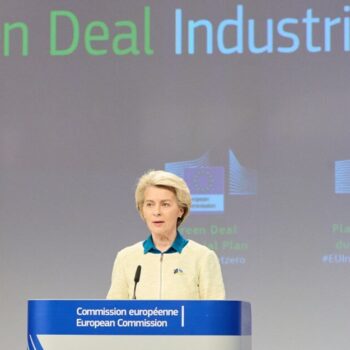The Clean Energy For All Europeans Package must do more to ‘Plan, Finance and Deliver’ Efficiency First in the EU’s Energy Union. Overall, a ‘C’ grade was awarded out of a rating from A to G. If key proposals are strengthened however, there is the potential to upgrade to an ‘A’.
While the Council of the European Union and European Parliament debate the contents of this package, the recommendations in this scorecard outline the way forward. Crucially, these proposals must create the conditions for capital to flow at the scale needed to close the annual investment gap for energy efficiency in the EU – rising to €134 billion for efficiency improvements in EU households alone.
The Clean Energy for All Europeans package has at its heart the aim of speeding up both the EU clean energy transition to deliver the EU’s 2030 climate change commitments. Related goals also include driving economic growth and job creation. Putting energy efficiency first is one of three main goals in the package to achieve these objectives and is fundamental to the EU’s wider Energy Union strategy.

Efficiency First Progress in the EU’s Energy Union
An assessment has been made of the Commission’s proposals in the Clean Energy For All Europeans package against what is needed to achieve Efficiency First. The benchmark for achieving Efficiency First is set out in a separate report by the European Climate Foundation called “Governance for Efficiency First: “Plan, Finance, Deliver”.
Overall, a ‘C’ grade was awarded out of a rating from A to G, with the potential to upgrade to an ‘A’.
The proposals are a good start. However, more needs to be done to strengthen the proposals and create the conditions for capital to flow at the scale needed to close the annual investment gap. Estimates published in the Clean Energy For All Europeans package set the annual investment gap for efficiency improvements in EU households alone at €134 billion[1]. Further investments are also needed in the industry and services sector to achieve the 30% EU energy savings target by 2030[2].

.png)
This briefing has been produced to provide a useful sense-check as the Council of the European Union and European Parliament debate the content of this package.
The assessment is structured as follows. For each of the principles for achieving Efficiency First – ‘Plan’, ‘Finance’ and ‘Deliver’ – we give an overall assessment and rating, followed by a breakdown of the key measures proposed and our recommendations for how these can be strengthened.
Our recommendations to strengthen the proposals in the package, each of which fall under the key principles for achieving Efficiency First in the Energy Union:
‘Plan’ – C
Prioritising opportunities to invest in energy efficiency and demand response within forward energy system planning.
‘Finance’ – E
Removing economic and institutional barriers to deliver financeable efficiency projects at scale.
‘Deliver’ – C
Retaining and creating mechanisms to underpin the development of energy efficiency and demand-side response markets.
Read the full Energy Efficiency Scorecard Report here.
[1]European Commission (SWD(2016) 405) Part 1 – Impact Assessment accompanying the EED. It is estimated that €214 billion of investment in households in needed annually between 2021-2030 to achieve the 30% EU energy saving target; EC (SWD(2016) 405) Part 2 Impact Assessment accompanying the EED. Current estimates for energy efficiency investments in buildings are €80 billion per year. [2]See EC (2016/405) Staff working document – Impact Assessment for the amendment of the Energy Efficiency Directive. To reach the EU’s 2030 climate and energy targets, around €379 billion needs to be invested annually between 2020-2030 (excluding transport). Of this, €301 billion needs to be invested into demand-side measures, of which over 70% (€214 billion) is in households.

